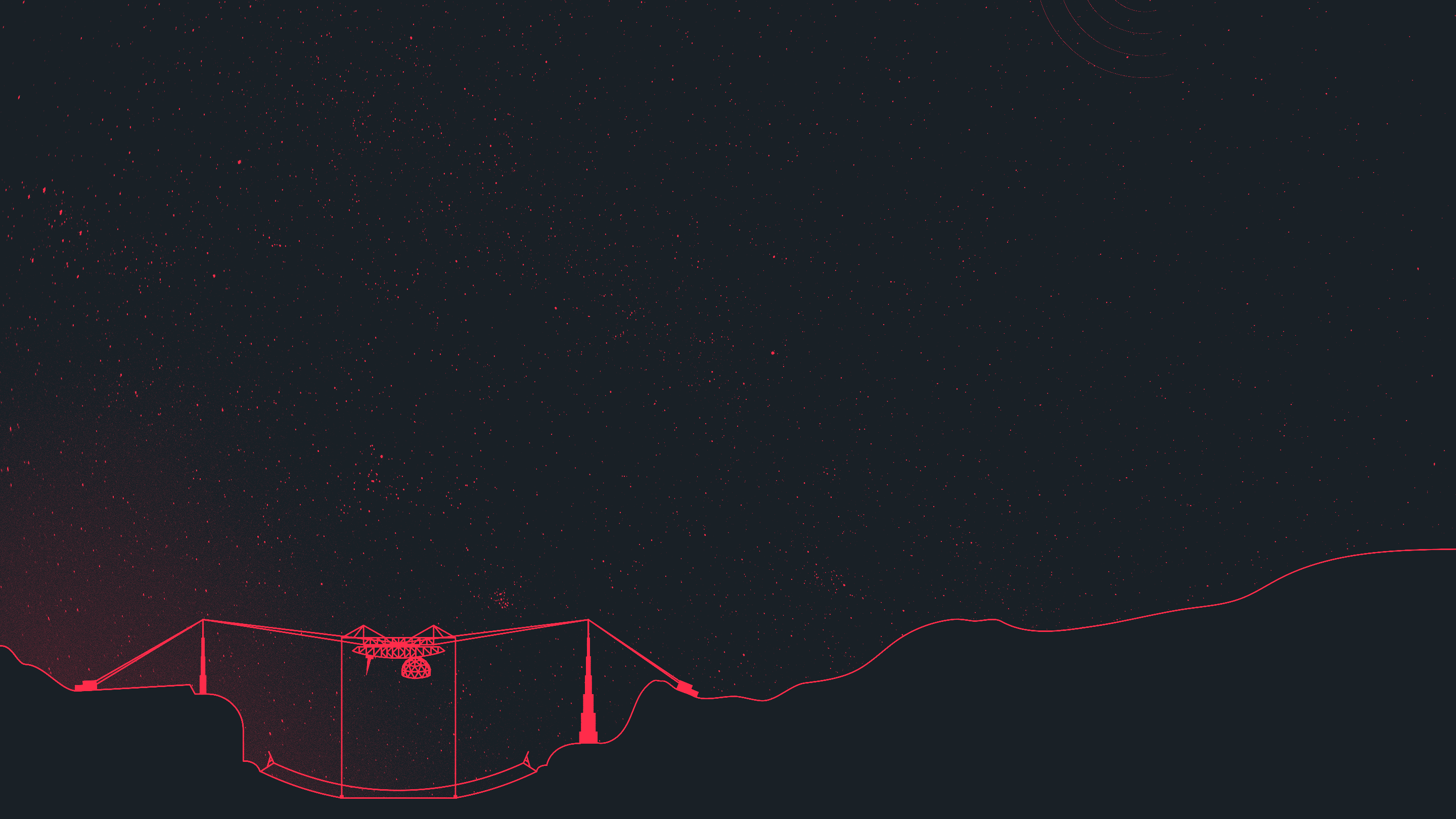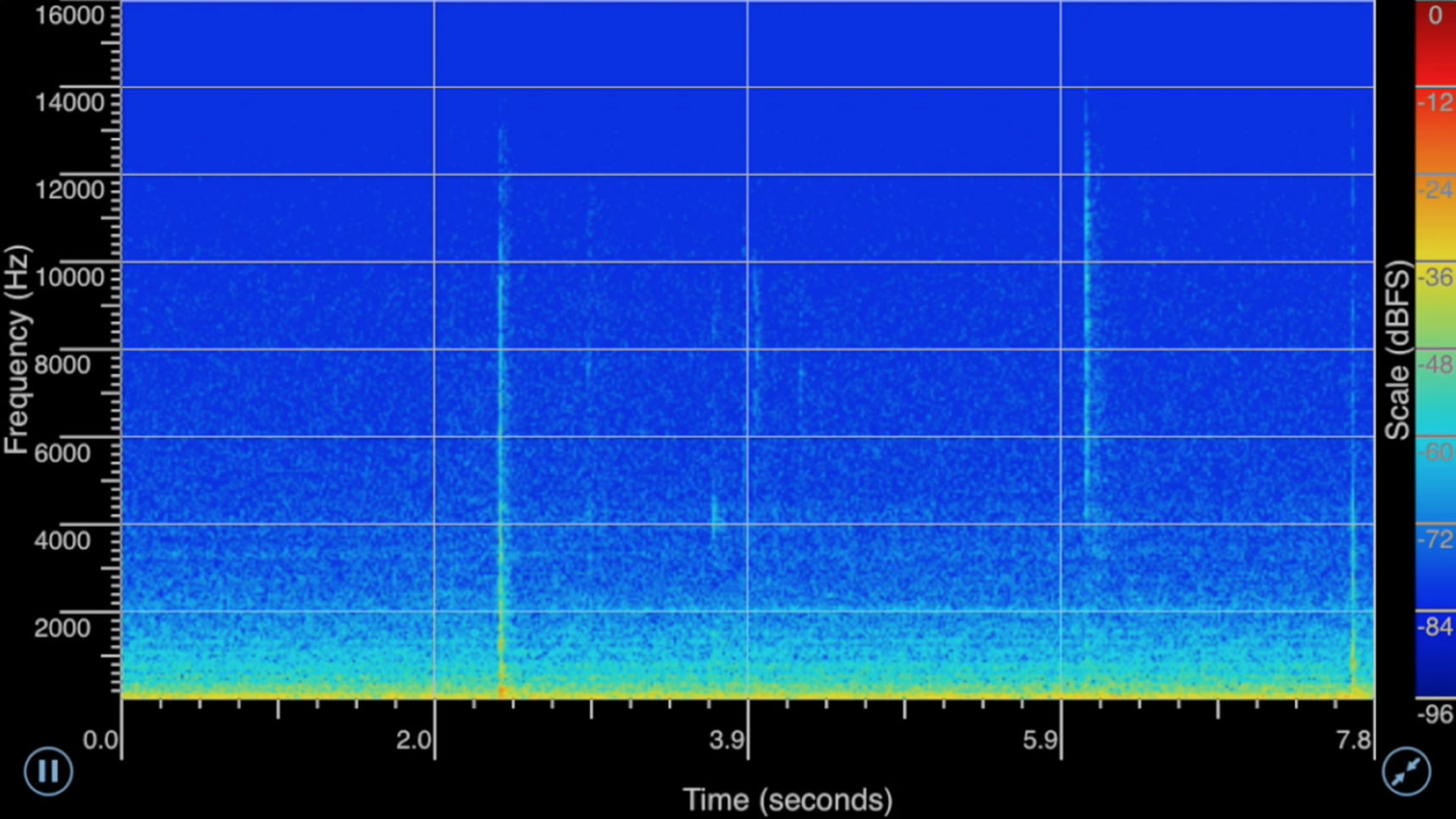Astronomers Trace Radio Burst to Extreme Cosmic Neighborhood

The Arecibo Observatory in Puerto Rico found evidence that the Spitler burst had its signal twisted by an intense magnetic field.
Olena Shmahalo/Quanta Magazine
Introduction
On Christmas Eve 2016, Andrew Seymour, an astronomer at the Arecibo Observatory in Puerto Rico, kissed his 4-year-old daughter, Cora Lee, goodnight, telling her he was off to track Santa. He walked to the well-worn telescope, occasionally passing revelers riding horses through the empty streets — a common sight in Arecibo during the holidays. Sometimes a lonely firework would light up in the distance. Close to midnight, he nodded to a guard and entered the nearly empty complex.
The radio dish was on a break from its regular schedule, so Seymour decided to test out new hardware that he and his colleagues had been working on. Soon after he began recording his observations, an extremely powerful radio source, 3 billion light-years away, decided to say hello. Seymour didn’t find Santa that Christmas, but rather an unexpected twist in the tale of one of the most mysterious objects in the cosmos.
The object that Seymour caught that night was the only known repeating fast radio burst (FRB), an ultra-brief flash of energy that flickers on and off at uneven intervals. Astronomers had been debating what might be causing the mysterious repeater, officially called FRB 121102 and unofficially the “Spitler burst,” after the astronomer who discovered it.
In the weeks following that Christmas detection, Arecibo registered 15 more bursts from this one source. These flashes were the highest frequency FRBs ever captured at the time, a measurement made possible by the hardware Seymour and his team had just installed. Based on the new information, the scientists have concluded in a study released today in the journal Nature that whatever object is creating the bursts, it must be in a very odd and extreme cosmic neighborhood, something akin to the environment surrounding a black hole with a mass of more than 10,000 suns.
The new work helps to strengthen the theory that at least some FRBs might be produced by magnetars — highly magnetized, rotating neutron stars, which are the extremely dense remains of massive stars that have gone supernova, said Shami Chatterjee, an astrophysicist at Cornell University. In the case of the repeater, it could be a neutron star “that lives in the environment of a massive black hole,” he said. Or it might also be like nothing we’ve seen before — a different kind of magnetar ensconced in a very intense, magnetically dense birth nebula, unlike any known to exist in our galaxy — “quite extraordinary circumstances,” he said.
Too Extreme to Find
It wasn’t obvious at first that the repeating burst had to live in such an extreme environment. In October, 10 months after Seymour detected that initial burst at Arecibo, Jason Hessels, an astronomer at the University of Amsterdam, and his student Daniele Michilli were staring at the data on Michilli’s laptop screen. They had been trying to determine whether a magnetic field near the source might have twisted its radio waves, an effect known as Faraday rotation. There appeared to be nothing to see.
But then Hessels had an idea: “I wondered whether maybe we had missed this effect simply because it was very extreme.” They had been looking for just a little bit of a twist. What if they were to search for something exceptional? He asked Michilli to crank up the search parameters, “to try crazy numbers,” as Michilli put it. The student expanded the search by a factor of five — a rather “naive thing to do,” Chatterjee said, because such a high value would be completely unprecedented.
When Michilli’s laptop displayed the new data plot, Hessels immediately realized that the radio waves had gone through a hugely powerful magnetic field. “I was shocked to see how extreme the Faraday rotation effect is in this case,” he said. It was like nothing else ever seen in pulsars and magnetars. “I’m also embarrassed because we were sitting on the critical data for months” before attempting such an analysis, he added.
The discovery sent ripples across the community. “I was shocked by the email announcing the result,” said Vicky Kaspi, an astrophysicist at McGill University. “I had to read it multiple times.”
Final confirmation came from a team searching for aliens. The Breakthrough Listen initiative ordinarily uses radio telescopes such as the Green Bank Telescope in West Virginia to scan the skies for signs of extraterrestrial life. Yet “since it’s not obvious in which direction they should point the telescope to search for E.T., they decided to spend some time looking at the repeating FRB, which clearly paid off,” said the astronomer Laura Spitler, namesake of the Spitler burst.
The Green Bank Telescope not only confirmed the Arecibo findings, it also observed several additional bursts from the repeater at even higher frequencies. These bursts also showed the same mad, highly twisted Faraday rotation.
What Powers Them
The extreme Faraday rotation is a signal that “the repeating FRB is in a very special, extreme environment,” Kaspi said. It takes a lot of energy to produce and maintain such highly magnetized conditions. In one hypothesis outlined by the researchers, the energy comes from a nebula around the neutron star itself. In another, it comes from a massive black hole.
In the nebula hypothesis, flares from a newly born neutron star create a nebula of hot electrons and strong magnetic fields. These magnetic fields twist the radio waves coming out of the neutron star. In the black hole model, a neutron star has its radio waves twisted by the enormous magnetic field generated by a nearby massive black hole.
Researchers haven’t come to an agreement about what’s going on here. Kaspi leans toward the black hole model, but Brian Metzger, an astrophysicist at Columbia University, feels that it’s somewhat contrived. “In our galaxy, only one out of dozens of magnetars resides so close to the central black hole. What makes such black hole-hugging magnetars so special that they would preferentially produce fast radio bursts? Did we just get really lucky with the first well-localized FRB?”
And the debate may get muddier before it gets cleared up. Chatterjee said theorists are certain to soon jump on the paper and start producing a multitude of new models and possibilities.
Burst Machines
The Spitler repeater is still the only FRB source that has been nailed down to a particular galaxy. No one knows quite where the other bursts are coming from. To say with any certainty that some — or all — of these energetic radio flashes come from highly magnetized environments, researchers need more data. And data are coming in. The Australian Square Kilometer Array Pathfinder (ASKAP), which is not yet officially complete, has already netted more FRBs than any other telescope in the world. With a tally of about 10 FRBs last year alone, it has proven to be “a remarkable FRB-finding machine,” said Matthew Bailes, an astrophysicist at Swinburne University of Technology — although none of them repeat.
Soon another telescope with a highly unusual design, called CHIME, will come online in Canada, and should spot many more FRBs — maybe 10 times more than ASKAP. Other next-generation telescopes, like the Square Kilometer Array (SKA), with dishes in South Africa and Australia, will surely contribute as well. As we register more of these flashes, chances are that some of them will repeat. Once scientists can sift through such data, the Faraday rotation effect may help them understand whether all FRBs are powered by a similar mechanism — or not.
This article was reprinted on Wired.com.




